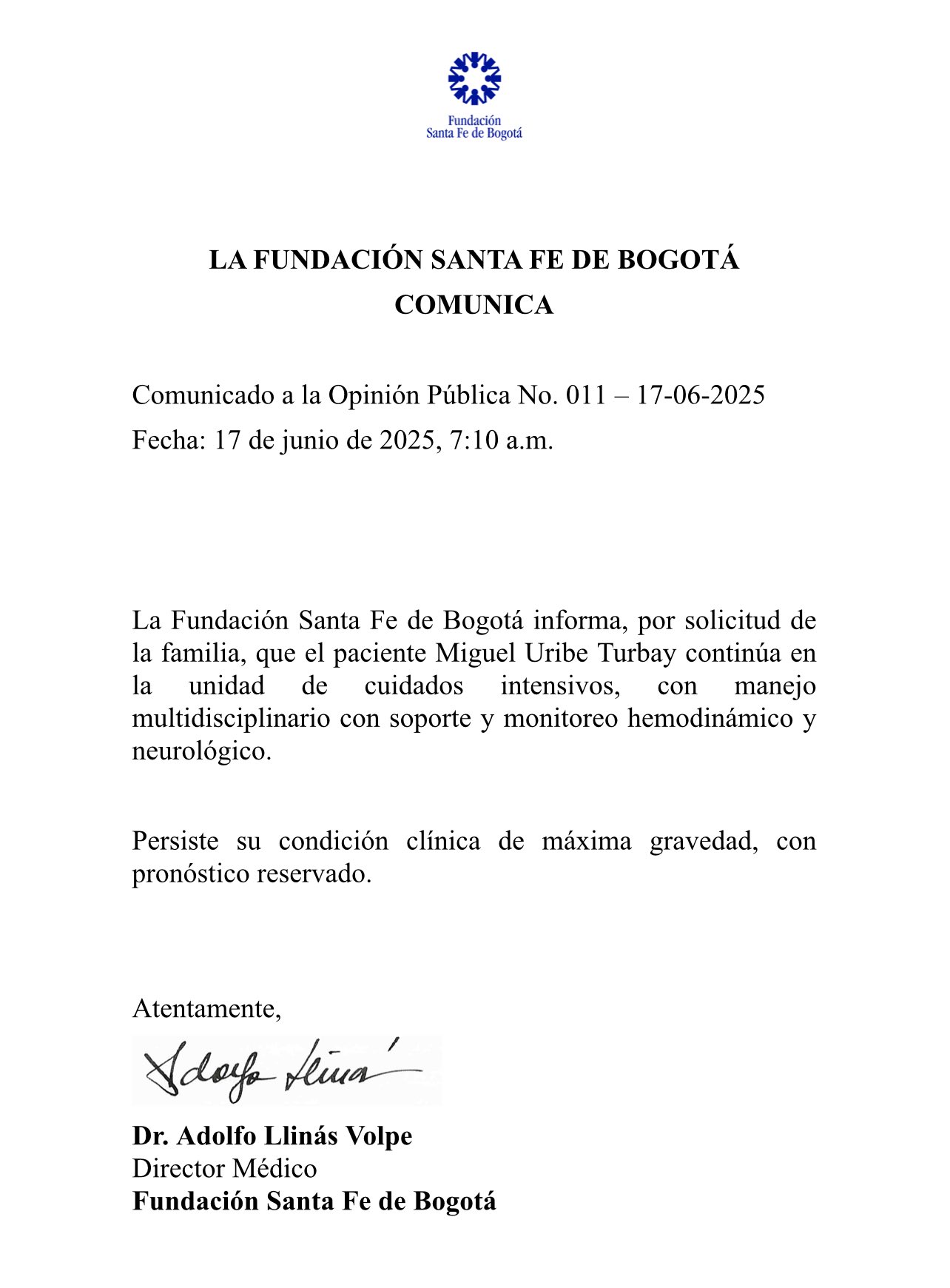What does the "multidisciplinary treatment with hemodynamic and neurological monitoring" that Miguel Uribe receives entail?

Senator Miguel Uribe Turbay, of the Democratic Center, remains hospitalized in the Intensive Care Unit (ICU) of the Santa Fe Foundation in Bogotá following the attack he suffered on June 7. According to the most recent medical report issued by the clinic, the patient is currently receiving "interdisciplinary management with hemodynamic and neurological support and monitoring," and his condition has been classified as "extremely serious with a reserved prognosis."
This condition has continued since Uribe underwent emergency surgery yesterday, June 16, from which he emerged in "extremely critical" condition with "persistent cerebral edema and difficult-to-control intracerebral bleeding."

June 17 statement on the condition of Senator Miguel Uribe Turbay. Photo: Santa Fe Foundation
Interdisciplinary management refers to a medical team composed of different specialists—in these cases, intensive care, neurology, neurosurgery, critical care nursing, and other areas—who work together to make clinical decisions in real time. In these cases, each intervention is evaluated jointly and adjusted based on the patient's progress.
On the other hand, one of the key aspects mentioned by the Santa Fe Foundation is hemodynamic support and monitoring, which involves constant monitoring of the patient's cardiovascular status. This type of monitoring basically measures variables such as blood pressure, heart rate, cardiac output, and central venous pressure, in order to maintain circulatory stability and prevent failure of vital organs.

Hundreds of people have arrived to pray for Senator Miguel Uribe's recovery. Photo: César Melgarejo/El Tiempo @melgarejocesarnew
Essentially, hemodynamic monitoring allows for precise adjustment of fluid administration, vasopressors, and cardiotonic medications, which is essential in critically ill patients, especially when there is a risk of circulatory collapse or shock.
On the other hand, neurological monitoring is especially relevant in patients with cerebral hemorrhages, such as Uribe's. This type of monitoring includes continuous assessment of consciousness, pupillary response, motor behavior, and, in some cases, measurement of intracranial pressure.
When a clinician uses the expression "maximum severity with a reserved prognosis," it indicates that the patient is in critical condition, with a high risk of death, and that their outcome cannot be predicted.
Environment and Health Journalist
eltiempo





